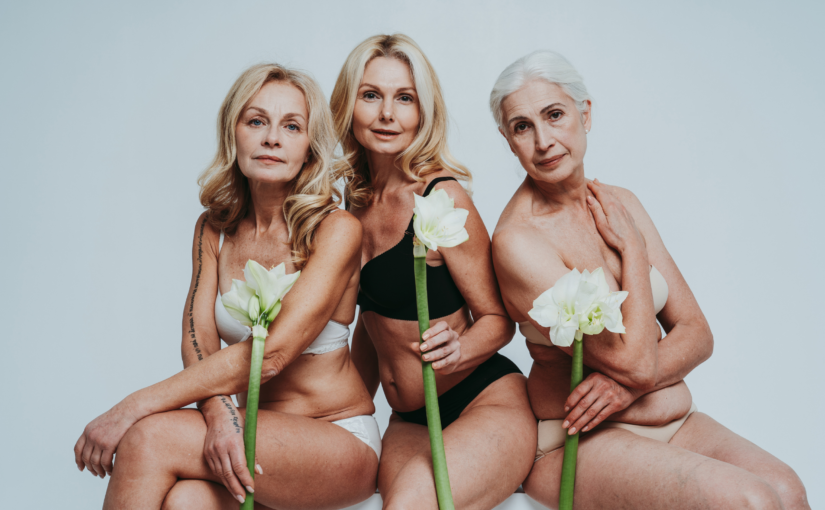With Oestrogen involved in over 400 functions within the body, no wonder when we reach the menopause and the oestrogen levels decline, do we see so many different symptoms, feelings and changes to our bodies and wellbeing.
When we think about the menopause, we think of the classic symptoms of hot flushes, night sweats and mood swings, but we don’t always realise the significant impact it can have on our skin.
I find when ladies come to see me when they are at the stage of life where their oestrogen levels are starting to decline, they refer to it feeling like their skin has changed overnight. This natural decline in levels of oestrogen can cause our skin to loose up to 30% of collagen in the first 5 years of the menopause. This can have a big impact on the way our skin feels and looks.
How does oestrogen affect our body?
Oestrogen is a collective name for a group of 3 steroid hormones produced by the ovaries; estradiol, estriol, and estrone. They are responsible for the development of our reproductive organs, creating a suitable environment for egg fertilisation and nutrition for the early embryo. Oestrogen of course also controls our menstrual cycle. However, apart from the reproductive side of things, it influences the function of nearly all our major organs.
Oestrogen and the skin
The skin is the largest organ of the body influenced by oestrogen. It produces its effects through oestrogen receptors. These receptors are located within our skin cells and on the outer cell membrane. When oestrogen binds to these receptors a chemical cascade of signals triggers that cell’s function, for example, a fibroblast cell will produce collagen.
These oestrogen receptors are found in numerous types of skin cells, however, they are in higher concentrations over the skin of the face and scalp. The most significant are the fibroblast cells of the dermis, the keratinocyte cells of the epidermis, and the blood vessels.
How oestrogen directly impacts the skin
- Collagen, elastin and fibrillin production = skin firmness, elasticity and structure
- Hyaluronic acid production = skin hydration
- Epidermal thickness = skin hydration and luminosity
- Angiogenesis = blood supply to the dermis
- Wound healing = effective recovery from injury
- Immune response = protection and recovery
- Free radical defence = protection from environmental aggressors
What happens to our skin when oestrogen declines?
When our oestrogen levels decline we get a reduction in the receptor activation. This can begin to make changes on a cellular level below the surface reducing the structure and health of the skin. This causes visible changes such as dryness, increased wrinkles, and loss of volume, epidermal thinning and dullness. The menopause can last for several years, starting with Peri-menopause, menopause and post-menopause, and all this time our receptors are losing more and more activation.
To be continued…
Look out for Part 2 where I discuss how we can help the skin reduce the effects of the menopause.
If you are feeling the effects of the menopause on your skin and would like help then please get in touch here, or alternatively, you can book in a virtual consultation where we can discuss your skin’s needs and put a plan in place to get you the results you want.


